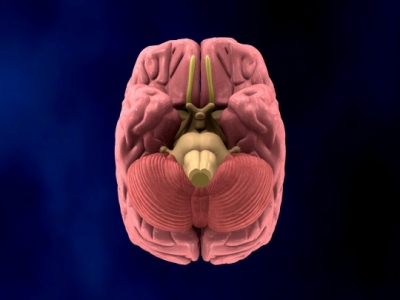Ostraya mozzhechkovaya ataxia
Description of acute cerebellar ataxia
Ostraya mozzhechkovaya ataxia – violation of the nervous system. If it is available there is a sudden upset in coordination.
Cerebellum – part of the brain, which plays a role in the balance and coordination. In the case of cerebellar ataxia it ceases to function properly . Although often seen limb movement disorder, Ataxia can also cause abnormal eye movements. Nausea and vomiting may also occur.
Acute cerebellar ataxia is most common in young children. It can occur several weeks after a viral infection, such as chickenpox. Most cases do not present any danger passes without treatment within months through. But, sometimes there is recurrent or chronic progressive cerebellar ataxia.

Causes of acute cerebellar ataxia
The main causes of acute cerebellar ataxia are
Viral infections, including:
- Chickenpox;
- Coxsackie disease;
- Epstein-Barr virus;
- Mycoplasma Pneumonia;
- HIV infection;
- Lyme Disease;
- The accumulation of certain toxins, such as lead, mercury, tallii, alcohol, and organophosphates (are insecticides);
- Cerebellar hemorrhage, abscess, blood clot, or obstruction of arteries;
- Paraotnosyaschiesya tumor syndromes (the immune system begins “attack” of mozzhechok).
Causes of recurrent or chronic acute ataxia include:
- Stroke;
- Congenital malformation of the cerebellum;
- Multiple sclerosis;
- Migraine or vertigo;
- Genetic abnormalities or metabolic disorders;
- Autoimmune diseases (eg, anticardiolipin antibody syndrome);
- Encephaloma;
- Saint Martin's evil.
Risk factors for acute cerebellar ataxia
Factors, which increase the risk of acute cerebellar ataxia:
- Age, especially for children under three years old or younger;
- Viral infections;
- The effects of vaccination;
- Exposure to certain insecticides, drugs or toxins.
Symptoms of acute cerebellar ataxia
The presence of the following symptoms are not always indicative of the presence of acute cerebellar ataxia. These symptoms may be caused by other disorders:
- Uncoordinated movements of the limbs;
- Clumsiness in everyday activities;
- Difficulty walking (instability);
- Speech disturbances with slurred speech and changes in tone, supply, and the screen;
- Visual appeal;
- Abnormal eye movements.
Accompanying symptoms may include:
- Headache;
- Dizziness;
- Changes in mental state (behavioral changes);
- Chaotic eye movements;
- Nesvyaznaya rechevaya structure.
Diagnosis of acute cerebellar ataxia
To diagnose the disorder need to pass a physical exam. Checking the coordination of movements of the limbs and on this basis to determine the degree and nature of ataxia.
Further tests may include:
- Poyasnichnaya puncture – Selection of a small amount of liquid, that surrounds the brain and spinal cord;
- MRT – test, which uses magnetic waves, to take photographs of structures in the spinal cord;
- CT scan – type of X-ray, which uses computer, to make pictures of the spinal cord;
- Blood tests;
- US – analysis, which uses sound waves, to investigate the status of the head;
- Analysis of urine.
Assays, Other possible to diagnose disease, which cause the symptoms:
- Nerve conduction study – analysis, which measures the speed and degree of electrical activity in the nerve, to determine, whether it is functioning normally;
- Rheotachygraphy (DOH) – analysis of the measures and records the electrical activity, which produce muscle at rest and in response to contraction of the muscle.
Treatment of acute cerebellar ataxia
Ataxia usually goes away without any treatment within a few months. In cases, where the root cause is identified, the doctor will treat the cause.
In extremely rare cases, the disease does not pass on their own. Then apply the treatment, which comprises:
- Corticosteroids;
- Vnutrivennый immunnый globulin;
- A plasma therapy obmennaya.
Drug treatment to improve muscle coordination has a low efficiency. But, It may be prescribed the following medication:
- Clonazepam;
- Amantadin;
- Gabapentin;
- Buspirone.
Occupational or physical therapy may play a role in alleviating lack of coordination. Changes in diet can also help.
Prevention of acute cerebellar ataxia
There is no way to prevent acute cerebellar ataxia except vaccination of children against viral infections, that increase their risk of disease.
